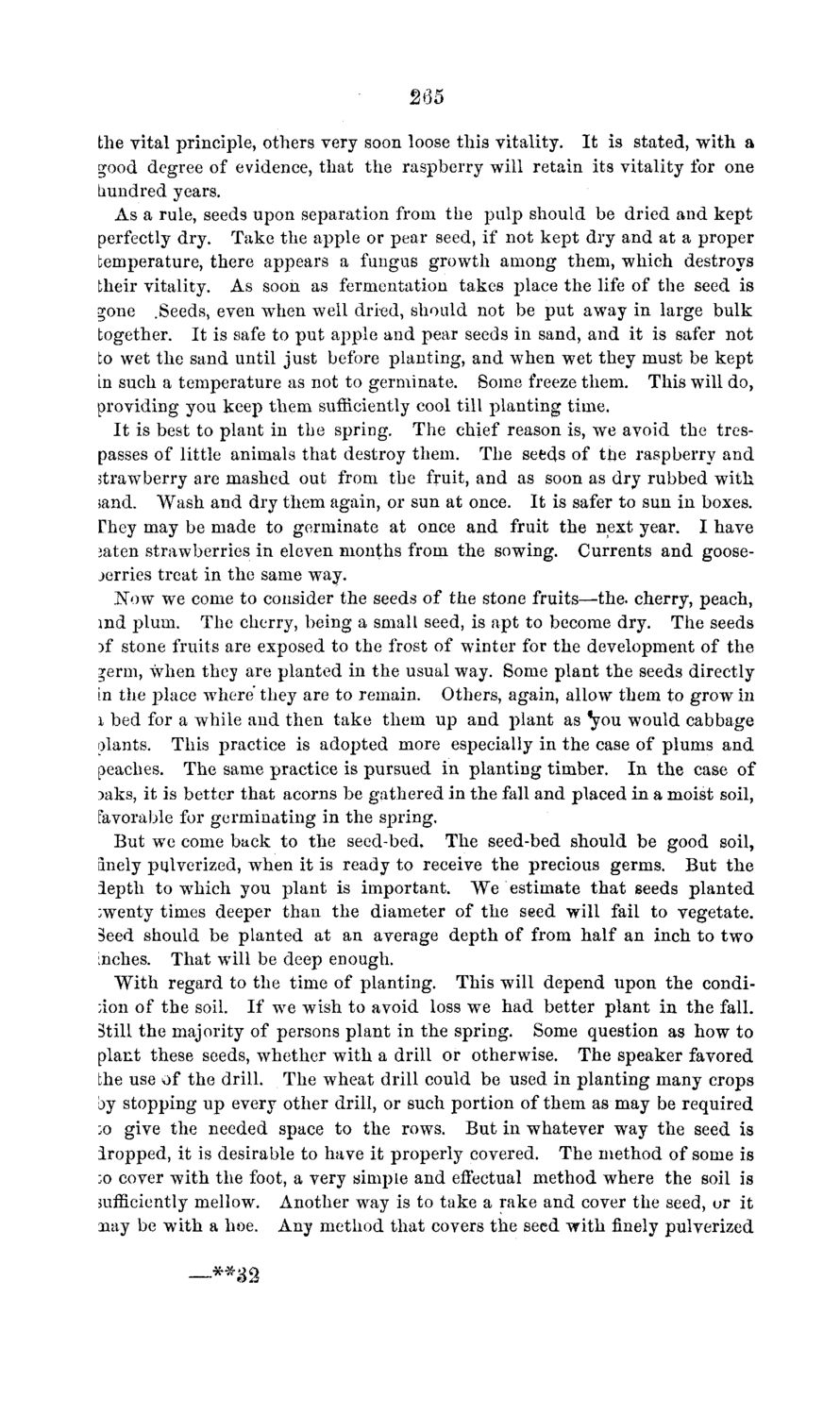| |
| |
Caption: Board of Trustees Minutes - 1869
This is a reduced-resolution page image for fast online browsing.

EXTRACTED TEXT FROM PAGE:
265 the vital principle, others very soon loose this vitality. I t is stated, with a good degree of evidence, that the raspberry will retain its vitality for one hundred years. As a rule, seeds upon separation from the pulp should be dried and kept perfectly dry. Take the apple or pear seed, if not kept dry and at a proper bemperature, there appears a fungus growth among them, which destroys their vitality. As soon as fermentation takes place the life of the seed is ^one .Seeds, even when well dried, should not be put away in large bulk together. It is safe to put apple and pear seeds in sand, and it is safer not to wet the sand until just before planting, and when wet they must be kept in such a temperature as not to germinate. Some freeze them. This will do, providing you keep them sufficiently cool till planting time. I t is best to plant in the spring. The chief reason is, we avoid the trespasses of little animals that destroy them. The seeds of the raspberry and 3trawTberry are mashed out from the fruit, and as soon as dry rubbed with sand. Wash and dry them again, or sun at once. I t is safer to sun in boxes. They may be made to germinate at once and fruit the next year. I have 3aten strawberries in eleven months from the sowing. Currents and goosejerries treat in the same way. Now we come to consider the seeds of the stone fruits—the. cherry, peach, ind plum. The cherry, being a small seed, is apt to become dry. The seeds :>f stone fruits are exposed to the frost of winter for the development of the ^erm, when they are planted in the usual way. Some plant the seeds directly in the place where they are to remain. Others, again, allow them to grow in i bed for a while and then take them up and plant as ^you would cabbage plants. This practice is adopted more especially in the case of plums and peaches. The same practice is pursued in planting timber. I n the case of Daks, it is better that acorns be gathered in the fall and placed in a moist soil, favorable for germinating in the spring. But we come back to the seed-bed. The seed-bed should be good soil, [inely pulverized, when it is ready to receive the precious germs. But t h e i e p t h to which you plant is important. We estimate t h a t seeds planted twenty times deeper than the diameter of the seed will fail to vegetate. Seed should be planted at an average depth of from half an inch to two inches. That will be deep enough. W i t h regard to the time of planting. This will depend upon the condi:ion of the soil. If we wish to avoid loss we had better plant in the fall. Still the majority of persons plant in the spring. Some question as how to plant these seeds, whether with a drill or otherwise. The speaker favored the use of the drill. The wheat drill could be used in planting many crops by stopping up every other drill, or such portion of them as may be required to give the needed space to the rows. But in whatever way the seed is Iropped, it is desirable to have it properly covered. The method of some is :o cover with the foot, a very simple and effectual method where the soil is sufficiently mellow. Another way is to take a rake and cover the seed, or it nay be with a hoe. Any method that covers the seed with finely pulverized —**$%
| |